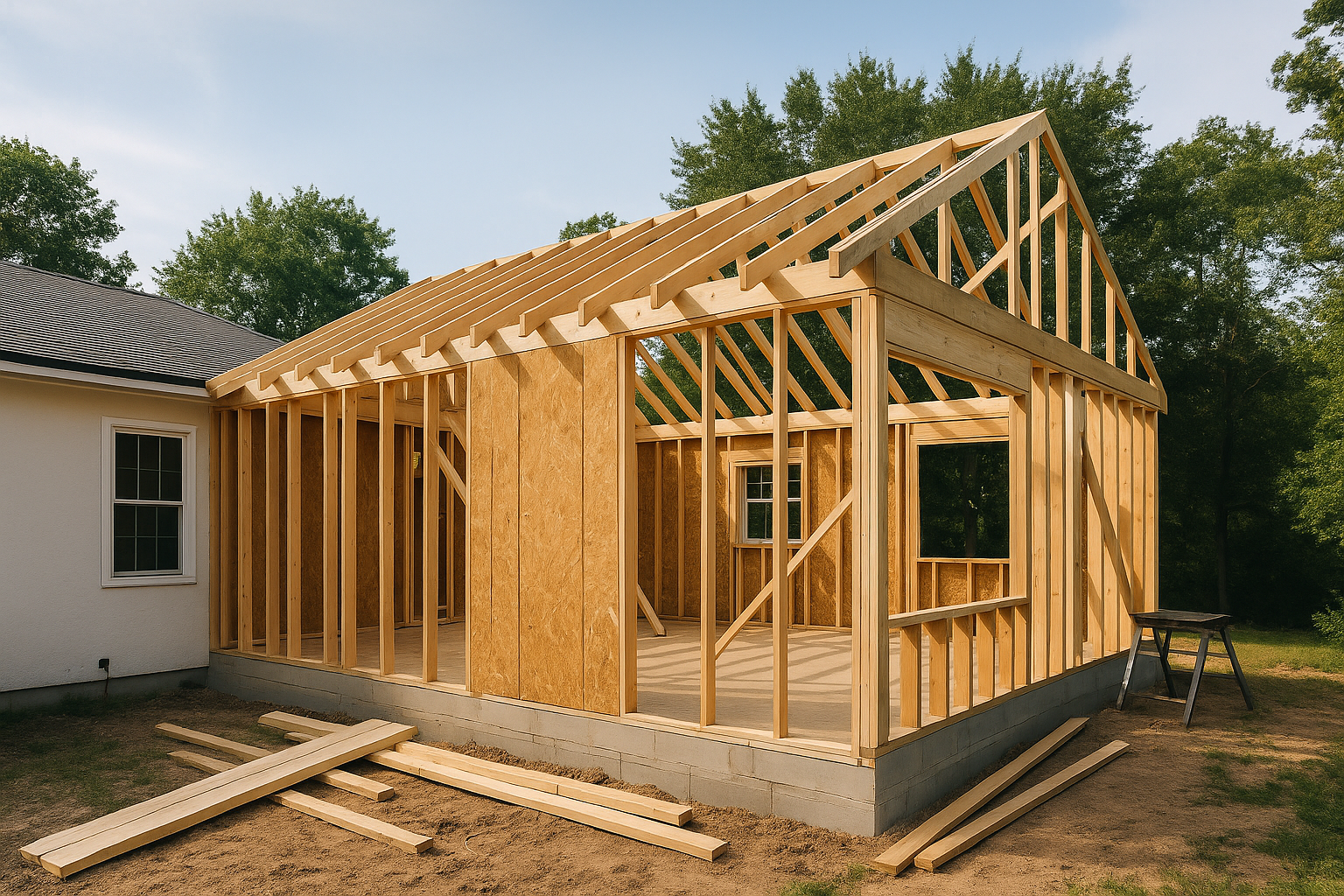Understanding FEMA’s 50% Rule, 49% Rule, and 51% Rule in Florida: What Homeowners in Hillsborough, Pinellas, and Pasco Counties Need to Know
Florida’s gorgeous coastline and warm climate draw people from around the world, but along with the sunshine and beaches comes the risk of hurricanes, heavy rain, and flooding. If you own property in a flood-prone area—especially in Hillsborough, Pinellas, or Pasco County—it’s crucial to understand how FEMA’s rules on substantial damage and improvements can affect your rebuilding or renovation plans. These regulations, often referred to as the 50% rule, 49% rule, and 51% rule, play a significant role in determining what upgrades and repairs you can do without triggering mandatory (and sometimes expensive) code-compliant improvements to your home.
Below, we’ll break down these rules, explain how they come into play after disasters like Hurricane Helene or Hurricane Milton, and provide guidance on how to determine the “value” of your home for FEMA’s purposes.
1. What Is the FEMA 50% Rule?
Often called the “50% Rule,” this FEMA guideline states that if the cost of improving or repairing your home in a Special Flood Hazard Area (SFHA) equals or exceeds 50% of your property’s market value (excluding the land), your entire home must be brought up to current flood and building standards.
- Substantial Improvement: If you plan to remodel, rehabilitate, or add on to your home, and those costs reach or exceed 50% of the building’s value, you must make the entire structure compliant with current codes (elevate the property, add flood vents, etc.).
- Substantial Damage: If a disaster—like a hurricane or flood—damages your home such that repairs will cost 50% or more of the home’s pre-damage market value, you must bring the entire building up to code as well.
Why 49% and 51%?
- 49% Rule: Some homeowners refer to an informal “49% rule” as a goal to keep renovation or repair costs just under 50% of the home’s market value so they avoid triggering full compliance.
- 51% Rule: When the improvements or repairs exceed 50% (i.e., hitting 51% or more), that triggers the requirement to bring the entire home up to current flood standards.
2. Learning From Past Disasters: Hurricane Helene and Hurricane Milton
Hurricane Helene
While Helene may not have been as nationally famous as storms like Andrew or Irma, in affected Florida communities, it caused significant flood damage. Homes in flood-prone areas faced the daunting prospect of costly repairs. When adjusting to new codes, homeowners learned that if their repair estimates reached that 50% threshold, they were responsible not just for fixing what was damaged, but for elevating homes, retrofitting, or otherwise ensuring compliance with the latest flood-resistance standards.
Hurricane Milton
Similarly, Hurricane Milton (a fictional example in some contexts or an under-publicized storm in local communities) created the same issues. Countless residents discovered that in order to rebuild, they had to produce documentation on their home’s market value—and if their repairs approached that 50% line, the entire structure needed to be updated to modern flood codes.
These disasters illustrate why understanding substantial damage and improvement rules before a storm hits can make all the difference in navigating the rebuilding process smoothly.
3. What Does “Substantial Damage” Really Mean?
FEMA defines Substantial Damage as damage of any origin (fire, flood, wind, earthquake, etc.) sustained by a structure where the cost of restoring the structure to its pre-damage condition would equal or exceed 50% of its market value before the damage occurred.
- A municipality’s floodplain management official or building department will typically be the one to determine “substantial damage” based on contractor estimates, appraisals, or other valuation tools.
- In Hillsborough, Pinellas, and Pasco Counties—coastal areas particularly prone to storm surge—officials are generally strict about enforcing FEMA guidelines to stay in good standing for flood insurance programs.
4. How to Determine the “Market Value” of Your Home
For the 50% rule, you need the market value of the structure (building only, not the land). There are generally a few ways to establish this value:
- Property Appraiser’s Office: Each county has a property appraiser who assigns an assessment for tax purposes. This number can sometimes be lower than actual market value, so it’s not always the final word—but local building departments may accept it.
- Independent Appraisal: You can hire a professional property appraiser who specializes in residential real estate. A third-party appraisal is often a more accurate reflection of what your home would sell for in a normal market condition.
- Qualified Estimates of Replacement Cost: In some instances, a licensed contractor or engineer can provide a replacement cost estimate that building officials might use for reference.
Always check with your local building department in Hillsborough, Pinellas, or Pasco County to see which method(s) they accept. Using a realistic and justifiable value is important so you don’t accidentally trigger the 50% threshold due to an undervalued appraisal.
5. The “Look-Back” or Cumulative Improvement Rule
One important twist many homeowners don’t realize is that these thresholds often apply on a cumulative basis over a set period of time (commonly one year). This means that if you pulled permits for renovations or repairs over the past 12 months (or another timeframe set by your local floodplain regulations), those costs could count toward your total when calculating that 50% figure.
For example:
- Let’s say you replaced your roof last year for $20,000, and now you’re looking to renovate your kitchen for $35,000. If your home’s market value is $100,000 and your building department aggregates these improvements over a 1-year or sometimes even a 5-year look-back period, you would have $55,000 of work, which is 55% of the value—triggering the 50% rule.
City's and Counties will differ refer to this list:
| Seminole |
On contract close
|
| Duneidin | 5 years |
| Pinellas | 1 year |
| Treasure island |
On Contract close
|
| Indian Shores | 10 years |
| Oldsmar | 10 years |
| Clearwater | 1 Year |
| Largo | 5 Years |
| Hillsborough | 1 year |
| Tampa | 1 year |
| St Pete | 1 year |
| Belair Beach | 5 Years |
| North Redington |
On Contract Close
|
| Indian rocks beach |
On Contract Close
|
| Pinellas Park |
On Contract Close
|
| Gulfport |
On Contract Close
|
| St Pete Beach | 5 years |
*On contract close: After a closed permit, the improvement amount restarts*
This cumulative or “look-back” approach helps prevent a homeowner from doing incremental renovations that each fall just under the limit but together exceed 50%.
6. Why These Rules Matter for Flood Insurance
Local governments enforce the 50% rule (and the concept of substantial damage/improvement) to remain compliant with the National Flood Insurance Program (NFIP). The idea is that structures in flood hazard areas should be brought into compliance with current flood standards if they are being significantly improved or repaired.
- Lower Flood Risk: Meeting the higher standards can reduce future flood damage, saving homeowners from repeated repair bills.
- Maintaining Insurance Eligibility: Counties like Hillsborough, Pinellas, and Pasco rely on residents’ access to NFIP coverage. Strict enforcement ensures continued eligibility for federally backed flood insurance in the region.
7. How to Prepare and Protect Yourself
- Get an Official Appraisal or Check with County Appraisers: Before planning any substantial remodeling, get a clear understanding of your home’s market value.
- Keep Track of All Permits and Receipts: If you perform any repairs or improvements, document the cost. This can help you plan your next projects without unexpectedly exceeding the 50% limit.
- Consult with Local Building Officials: Regulations can vary from one city to the next, even within the same county. Always verify local ordinances and permitting requirements.
- Consider Future Flood Mitigation: Even if you don’t hit the 50% threshold, taking proactive flood-proofing measures could reduce insurance premiums and lower your risk of damage during future storms.
8. After a Hurricane: Next Steps
If you’ve experienced damage from a recent storm—like the hypothetical Hurricane Milton or a real disaster such as Hurricane Helene—begin by contacting your local building department. They’ll help you:
- Estimate the cost of repairs.
- Determine if your damage meets the 50% threshold for substantial damage.
- Discuss any elevation requirements or other flood mitigation standards you may need to incorporate.
9. Conclusion
Florida’s Gulf Coast, including Hillsborough, Pinellas, and Pasco Counties, offers stunning views and great communities—but also faces a high risk of flooding and hurricane damage. Understanding FEMA’s 50% rule and how the 49% and 51% thresholds can affect your home’s rebuilding or renovation plan is vital to staying compliant and managing costs effectively.
By keeping accurate records, tracking cumulative improvements, and getting a reliable appraisal for your home’s market value, you can better navigate the permitting and repair process—whether you’re recovering from a storm or simply upgrading your property. In the end, these rules are designed not just to protect the integrity of the NFIP program, but to encourage safer, more resilient homes in flood-prone areas.
Key Takeaways
- The “50% Rule” is triggered when improvements or repairs equal or exceed 50% of your home’s market value.
- “49%” is the informal strategy to avoid mandatory full compliance upgrades, while “51%” ensures you must upgrade to current standards.
- “Substantial Damage” includes any repairs from fire, flood, or other causes that reach or exceed 50% of your home’s pre-damage market value.
- Check for a cumulative “look-back” period; multiple smaller projects can add up.
- Always verify your home’s market value via a county assessor or independent appraisal to avoid surprises.
- In Florida’s coastal areas—especially Hillsborough, Pinellas, and Pasco—compliance with these rules is crucial to maintain access to flood insurance and protect against future disasters.


.png)
.png)